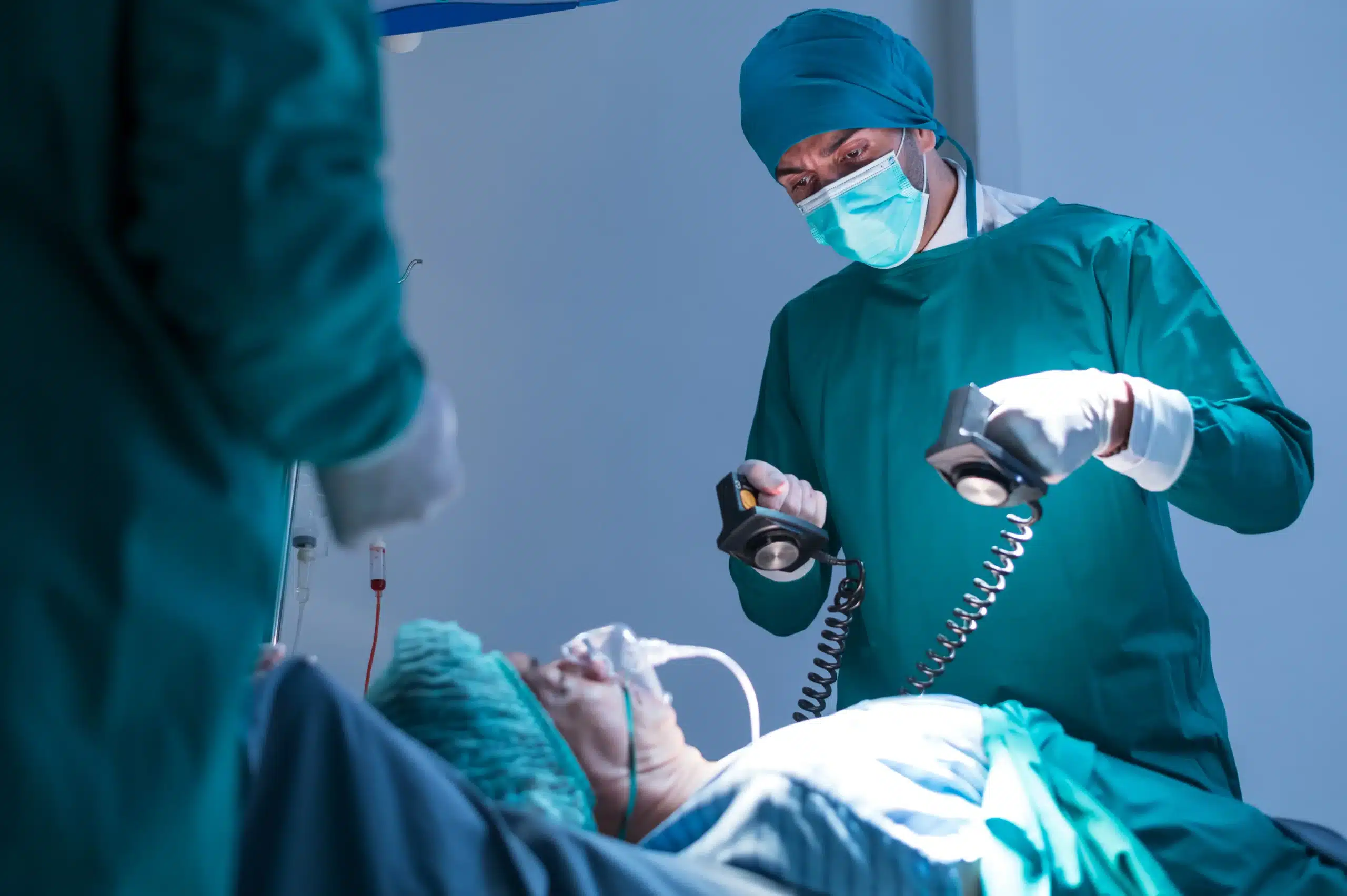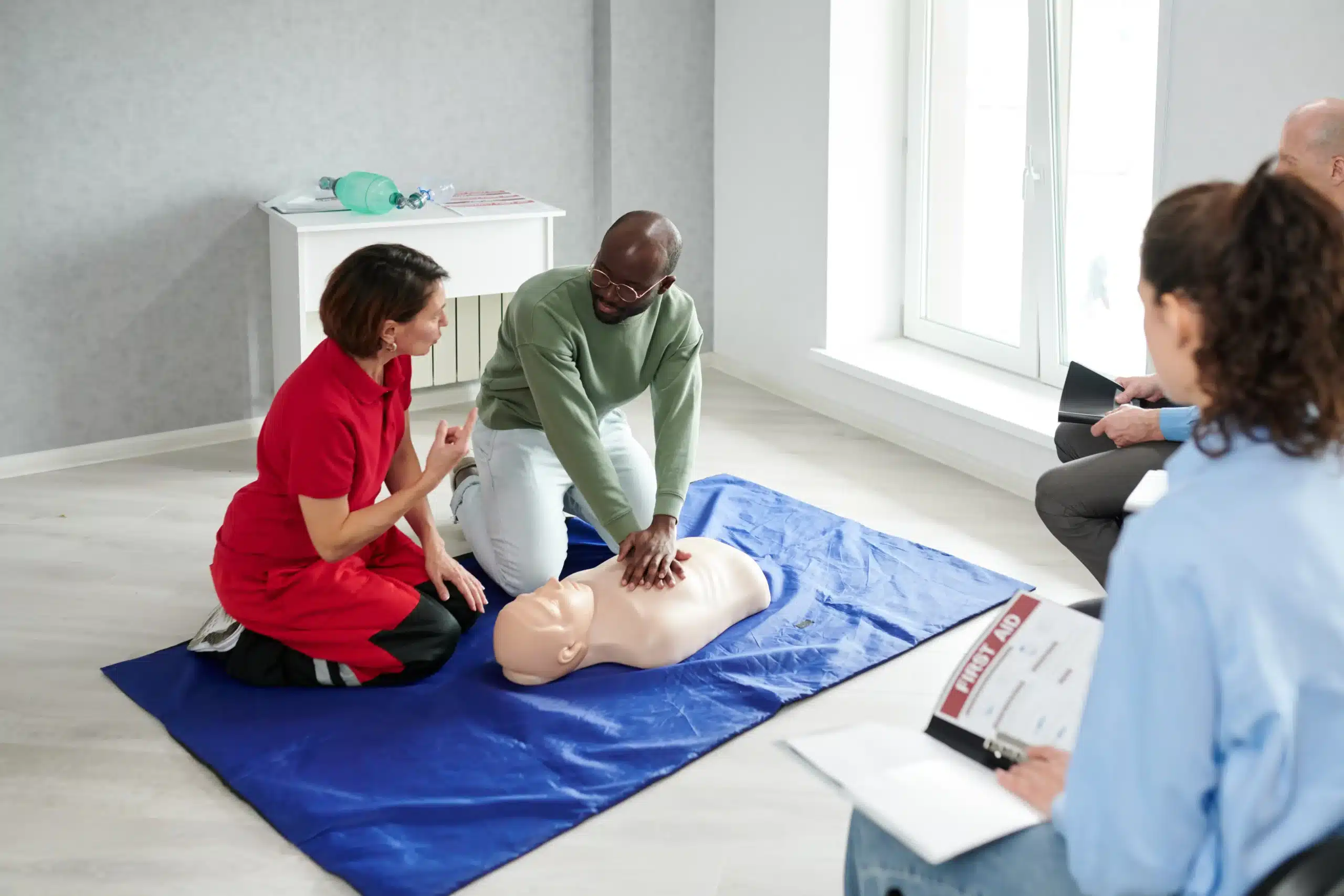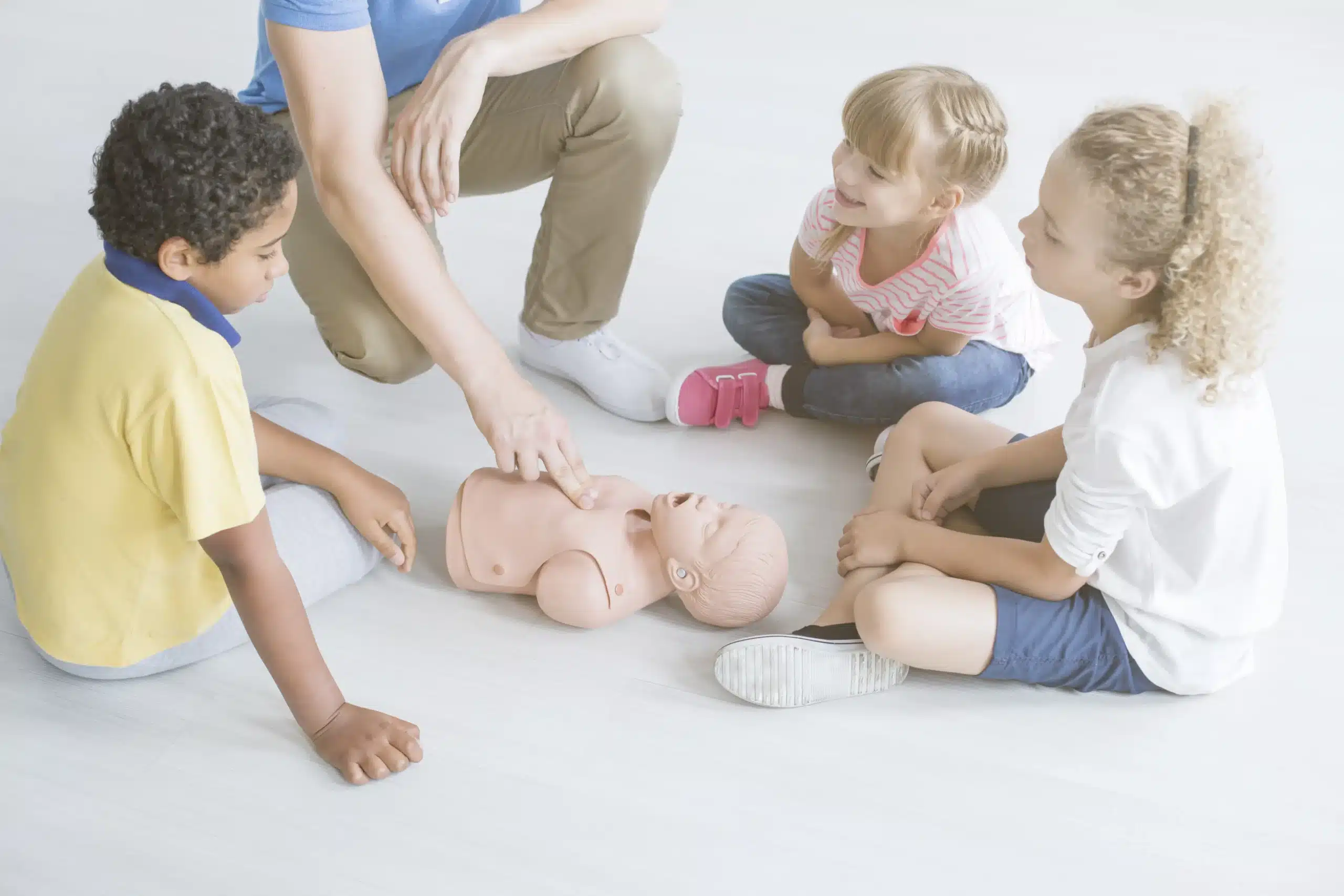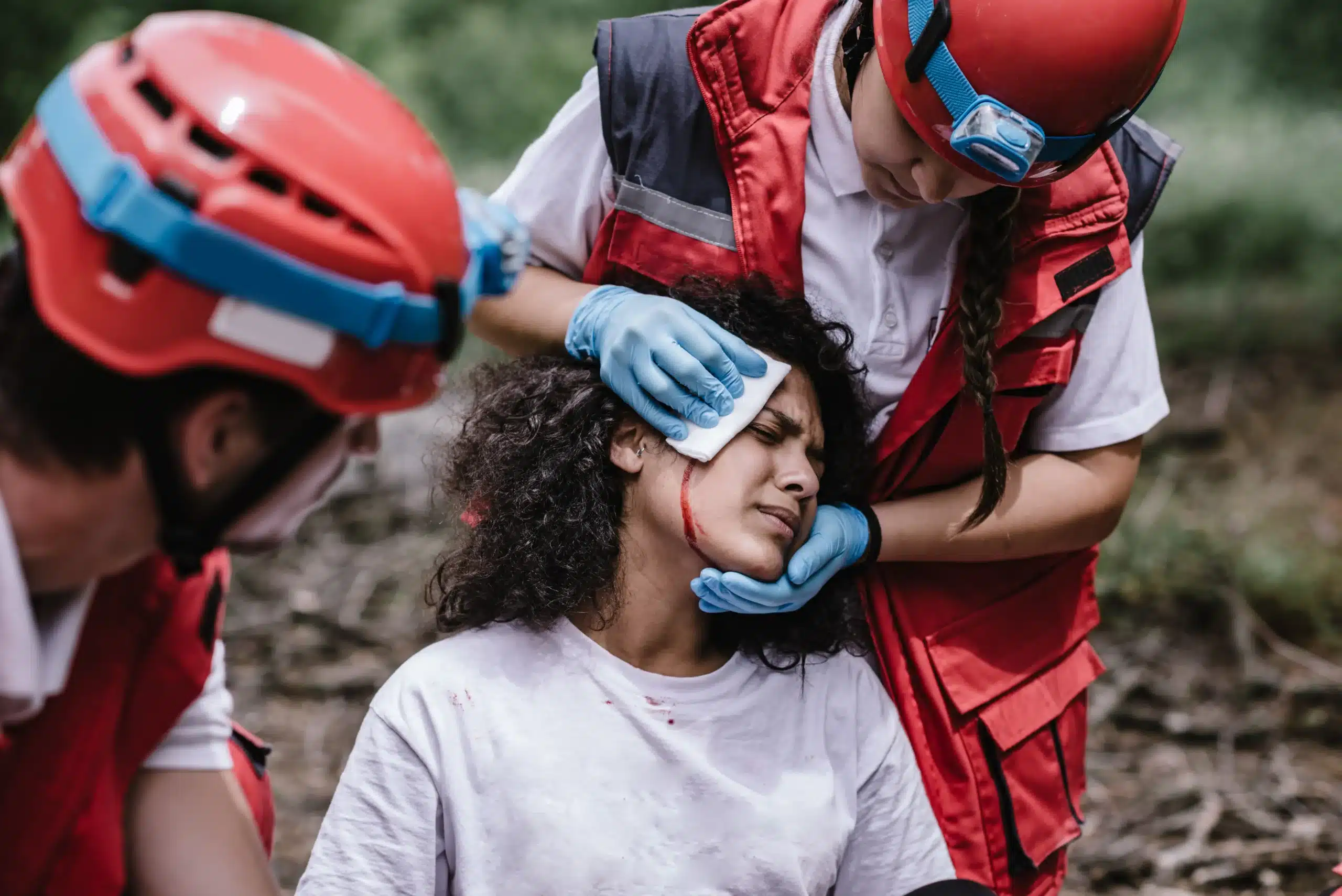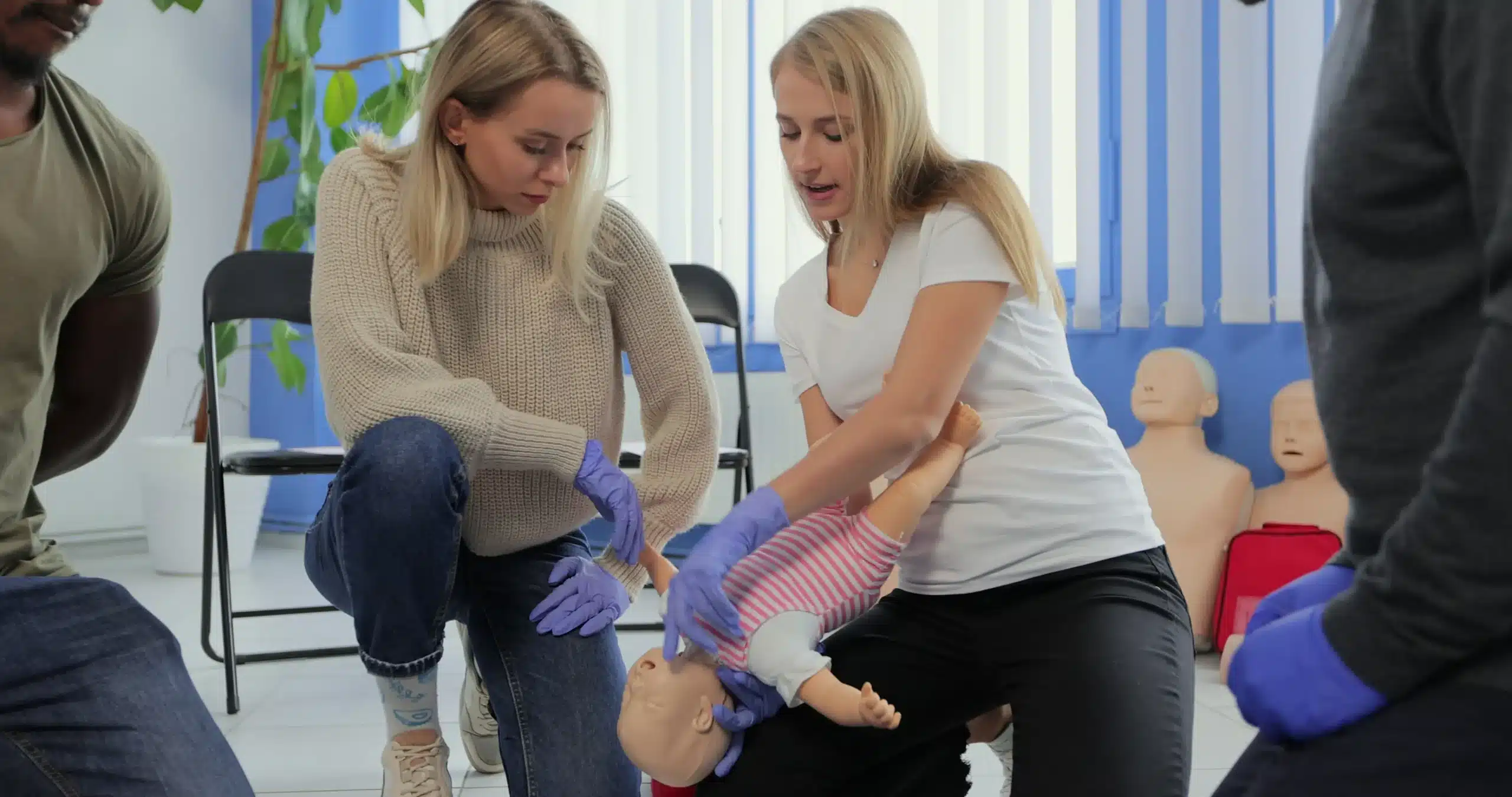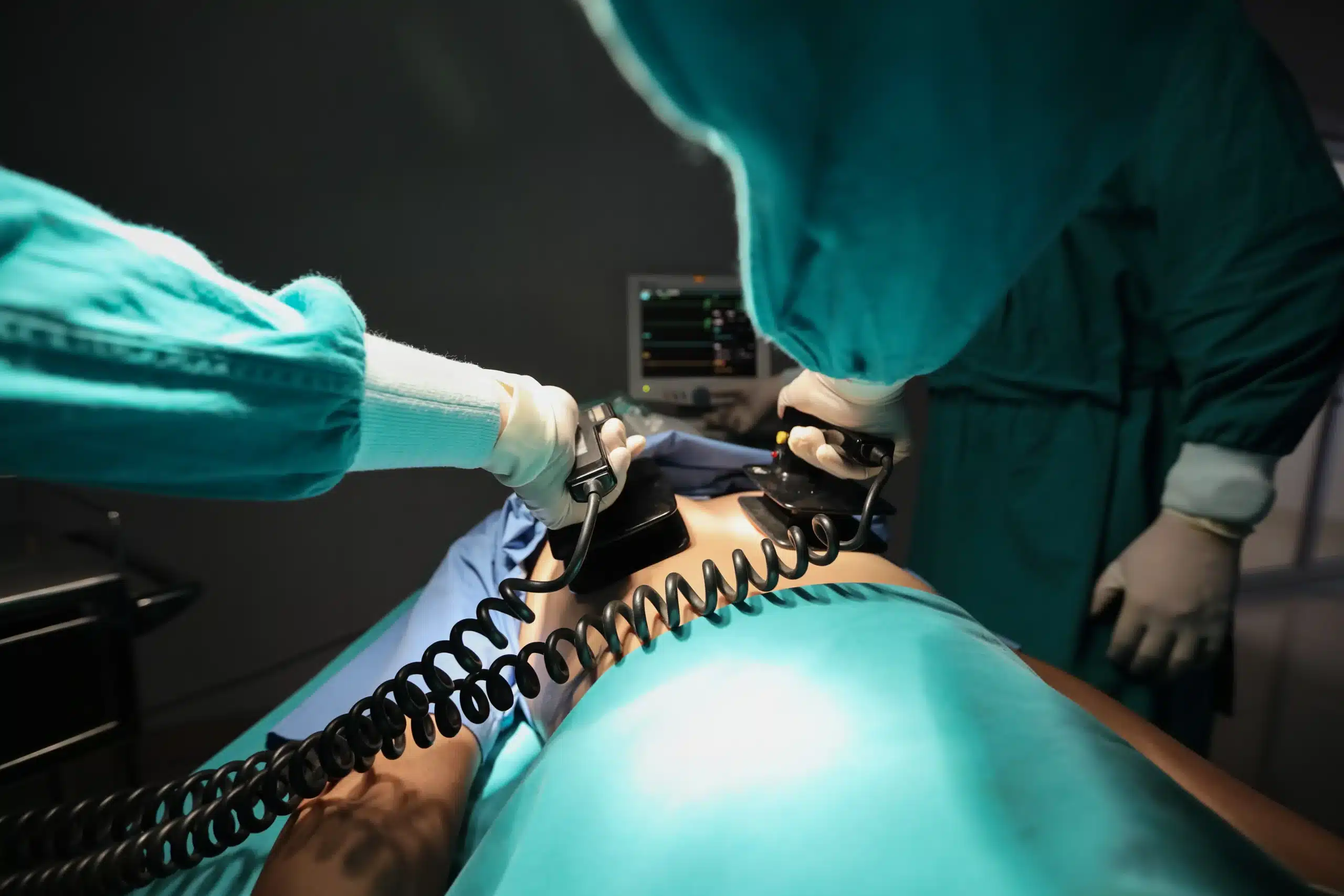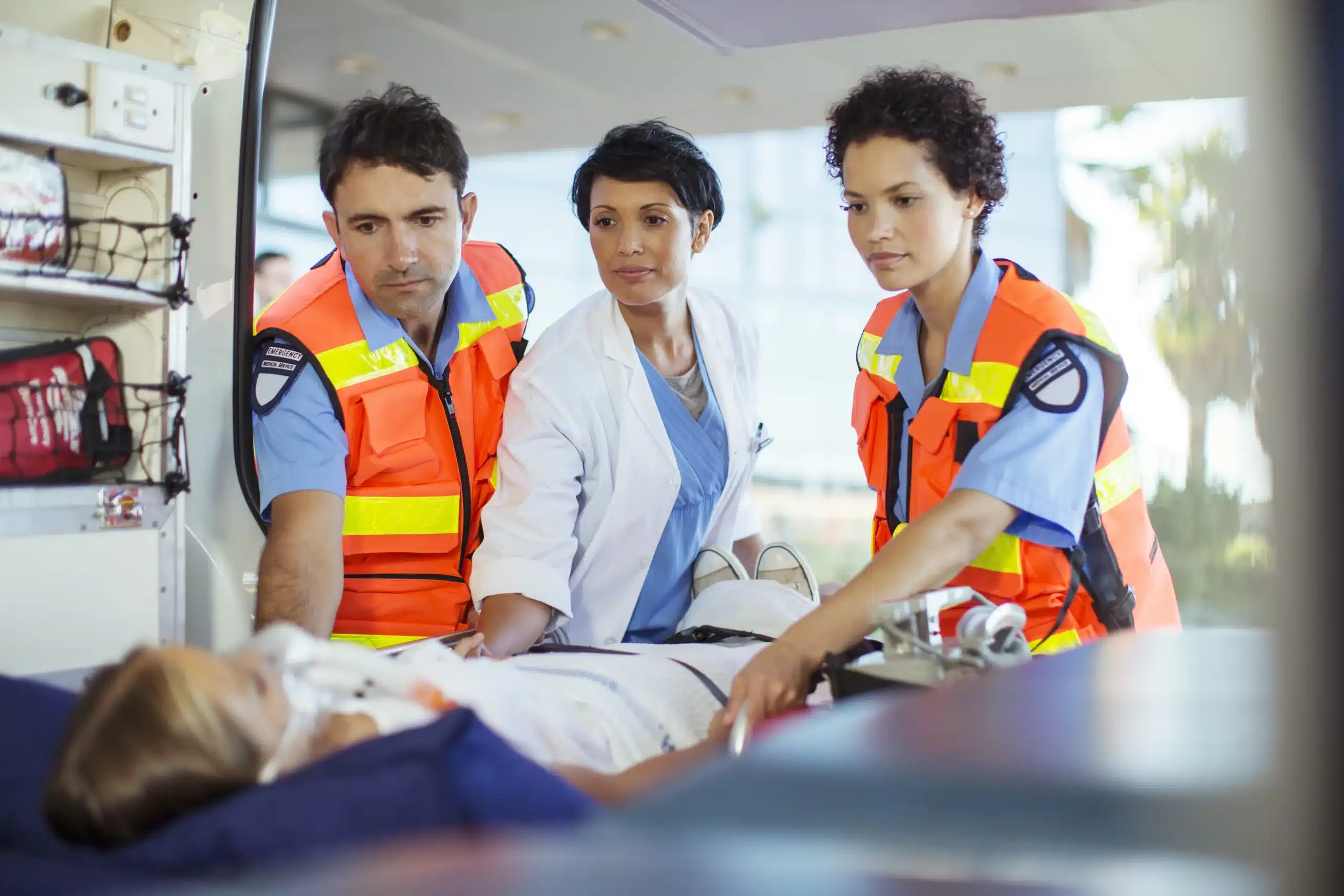Learning CPR is a powerful investment—not just in yourself, but in your community. It equips you with the skills to respond effectively in medical emergencies, potentially saving a life. This guide will help you find CPR courses near me, understand the different levels of training, and choose the right course for your needs. We’ll cover everything from basic CPR to more advanced certifications like ACLS and PALS, as well as what to expect in a class and how to choose a reputable training provider. We’ll also address common misconceptions about CPR and discuss the costs involved. Let’s empower you to become a confident and prepared first responder.
Key Takeaways
- CPR knowledge saves lives: Learning CPR empowers you to help in emergencies and significantly improves cardiac arrest survival rates. Find a course—online, in-person, or blended—that fits your needs.
- Select the right training: From basic to advanced certifications like ACLS and PALS, understanding the different CPR courses is crucial. Choose reputable providers like the American Red Cross, American Heart Association, or a local certified center like Safety Training Seminars.
- Stay sharp and share your knowledge: Regular practice keeps your CPR skills current. Encourage your community to learn CPR and debunk common myths.
What is CPR? Why is it Important?
Cardiopulmonary resuscitation (CPR) is a lifesaving emergency procedure used when someone’s breathing or heartbeat has stopped. This can happen after a heart attack, electric shock, near drowning, or anything else that disrupts blood flow. CPR combines chest compressions and rescue breaths to keep oxygenated blood circulating to vital organs until professional medical help arrives. Learning CPR empowers you to respond effectively in these critical situations. It’s a skill that can make a profound difference in someone’s life.
CPR is undeniably important because it dramatically increases the chances of survival during cardiac arrest. The American Heart Association states that immediate CPR can double or even triple a person’s chance of surviving. Bystanders who know CPR can provide immediate support while waiting for first responders, significantly impacting the outcome. Learning this essential skill not only equips you to potentially save a life, but also gives you the confidence to act quickly and effectively in a crisis. CPR is a skill accessible to everyone and doesn’t require extensive medical training.
CPR Course Types
Knowing which CPR course is right for you can feel a little overwhelming at first. Don’t worry, we’ll break down the most common types to help you choose the best fit.
Basic CPR Training
Basic Life Support (BLS) CPR training is an excellent starting point for anyone looking to learn CPR. This course covers the essentials of CPR and is perfect for those who want a foundational understanding, whether for personal knowledge or professional requirements. BLS certification is often required for healthcare providers, teachers, and other professionals who work with the public. At Safety Training Seminars, our BLS course follows American Heart Association guidelines, ensuring you receive high-quality, up-to-date training.
Advanced Life Support (ACLS)
Advanced Cardiovascular Life Support (ACLS) certification goes beyond the basics of CPR. This advanced course is designed for healthcare professionals who need to manage cardiopulmonary arrest and other cardiovascular emergencies. ACLS training involves comprehensive instruction, including how to administer medications, interpret electrocardiograms (ECGs), and work effectively as part of a resuscitation team. It’s a crucial certification for doctors, nurses, paramedics, and other medical personnel. You can find more information about our ACLS training on our website.
Pediatric CPR (PALS)
Pediatric Advanced Life Support (PALS) focuses on providing life-saving care to infants and children. This specialized training equips healthcare providers with the skills and knowledge to respond to pediatric emergencies effectively. PALS courses cover topics like respiratory distress, shock, and cardiac events in children, emphasizing the unique physiological differences between children and adults. Like our ACLS course, our PALS training adheres to American Heart Association standards.
Online vs. In-Person Training
When it comes to learning CPR, you have options for how you take the course. Both online and in-person training have their advantages. Online CPR courses offer flexibility and convenience, allowing you to learn at your own pace from anywhere with an internet connection. Our RQI program is a great example of this flexibility. However, in-person classes provide hands-on practice and direct interaction with an instructor, which can be invaluable for mastering the techniques. Consider your learning style and schedule when deciding which format is best for you. We offer both options at Safety Training Seminars.
Find Reputable CPR Training Near You
So, you’re ready to learn CPR? Great! Now, let’s find the right course for you. Choosing a reputable training provider is key to receiving high-quality instruction and a valid certification. Here’s what to look for:
Accredited Organizations
Always choose a course from a recognized, accredited organization. Two of the most widely accepted are the American Red Cross and the American Heart Association (AHA). The Red Cross offers various CPR training formats to suit different learning styles and schedules. For those in the San Francisco Bay Area, particularly Dublin, Livermore, and Mountain House, Safety Training Seminars is a woman-owned, AHA-certified training center providing comprehensive CPR, First Aid, BLS, ACLS, and PALS courses. Our focus on excellent customer service and competitive pricing makes us a solid choice. We also offer a low price guarantee. We encourage you to compare our prices.
Use Online Search Tools
Finding a CPR class near you is easier than ever. Start by considering your specific needs. Do you need OSHA compliance? Do you prefer weekend or evening classes? Knowing what you’re looking for will help you narrow your options. The Red Cross, for example, has a user-friendly website where you can search for classes by location and filter by date and time. Many organizations offer flexible scheduling, including weekend and evening options, to accommodate busy schedules.
Check Reviews and Ratings
Before you sign up, take a few minutes to read reviews. Past participants often offer valuable insights into the quality of instruction, the learning environment, and the overall experience. Sites like Trustpilot and even individual company websites (like this one, with testimonials from CPR123) can give you a feel for what to expect. Look for comments about engaging instructors, informative content, and a supportive learning atmosphere. These factors can significantly impact your learning experience.
What to Expect in a CPR Class
So, you’ve decided to take a CPR class—fantastic! Knowing what to expect can help you feel prepared and confident. Here’s a glimpse into a typical CPR course:
Course Length and Structure
CPR classes are designed to be concise and manageable, fitting around busy schedules. You’ll find options for in-person, online, and blended learning (a mix of online coursework and an in-person skills session). Blended learning offers flexibility while still providing crucial hands-on practice. In-person classes often take just a few hours, making them a great option for a productive weekend morning or afternoon. You can find convenient CPR courses near you in a variety of formats to suit your learning style and schedule.
Skills and Knowledge You’ll Learn
CPR courses equip you with the skills to respond to various emergencies. You’ll learn CPR techniques for infants, children, and adults, giving you the confidence to assist anyone in need. Many courses also include essential first aid training and instruction on using an automated external defibrillator (AED). This comprehensive approach ensures you’re well-prepared for a range of situations. You’ll gain practical skills and the knowledge to make a real difference in an emergency.
Hands-on Practice
Hands-on practice is the cornerstone of effective CPR training. In-person classes offer the opportunity to work with mannequins, simulating real-life scenarios. This tactile experience helps solidify the skills you learn and builds muscle memory, crucial for responding effectively under pressure. You’ll also have the chance to interact with certified instructors, ask questions, and receive personalized feedback. This interactive environment ensures you gain practical experience and confidence in your abilities.
Getting Certified
Upon successful completion of your CPR course, you’ll receive a certification valid for two years. Many organizations now offer digital certificates, providing easy access and eliminating the worry of losing a paper copy. Remember, staying current with your certification is vital, so mark your calendar for renewal when the time comes. This two-year certification ensures your skills are up-to-date and you’re ready to respond confidently in an emergency. You’ll walk away with a nationally recognized certification, ready to assist in critical situations.
CPR Course Costs
Getting CPR certified is an investment in your skills and ability to help in a crisis. Understanding the costs involved can help you budget and find the right course for you. Here’s a breakdown of what you can expect:
Average Prices
The price of a CPR course varies depending on the type of certification you need (basic CPR, ACLS, PALS, etc.), the training provider, and whether you choose online or in-person training. Basic CPR courses typically range from $75 to $150. More specialized courses like ACLS and PALS for healthcare providers usually cost more, potentially ranging from $150 to $300 or more. Contacting your chosen provider directly, like Safety Training Seminars, is always recommended for the most up-to-date pricing. Remember, the cost of training is small compared to the potential value of saving a life.
Extra Costs
While the initial course fee covers the core training, be aware of potential additional expenses. Some providers may charge extra for course materials like manuals or pocket masks. There might also be fees for replacement certification cards if you lose yours. If you’re pursuing instructor-level certification, as detailed on Online CPR Certification, expect higher upfront costs and ongoing expenses for maintaining your certification. These can include recertification fees and liability insurance.
Discounts and Promotions
Many training organizations offer discounts for group bookings, students, or returning customers. Keep an eye out for special promotions or seasonal deals that can make training more affordable. For example, some providers, like the Red Cross, occasionally offer discounts on training supplies. Check with Safety Training Seminars in Livermore for their latest offers on group discounts and other ways to save. Don’t hesitate to ask about potential cost savings when you contact a provider.
CPR Certification: What You Need to Know
Understanding Your Certification
CPR certification shows you’ve completed a recognized training program and have the skills to perform CPR. Your certification will be valid for a specific period, usually two years, and should come from a reputable organization like the American Heart Association (AHA) or the American Red Cross (ARC). While online CPR training can be convenient, ensure it’s from an accredited organization, especially if you work in healthcare. Many employers and licensing boards may require more than just basic online CPR training, so check their specific requirements. Our courses meet these standards, giving you a recognized and respected credential. We offer a two-year certification upon successful completion of our courses.
How Long it Lasts & Renewing
CPR certifications are typically valid for two years. After this, you’ll need a renewal course to keep your skills sharp and your certification current. Renewal courses are usually shorter than the initial course, focusing on a refresher of your existing knowledge. If your certification has expired, you’ll likely need to take the full course again. Remember to budget for recertification every two years. We offer convenient and affordable renewal courses to help you stay certified. Check out our website for more information on our renewal options and other courses.
Choose the Right CPR Course
So, you’ve decided to get CPR certified—that’s fantastic! But with various courses available, how do you pick the one that’s right for you? Don’t worry, it’s not as complicated as it might seem. Let’s break down how to choose the perfect CPR course.
Assess Your Needs
First, think about why you’re getting certified. Are you required to have CPR training for your job? If so, check if your workplace mandates a specific type of certification, like OSHA-compliant training. Also, consider your learning style and schedule. Do you prefer in-person instruction or the flexibility of online learning? How much time can you realistically commit to the course? Answering these questions will help narrow down your options.
Compare Courses
Next, explore the different types of CPR courses. Basic Life Support (BLS) is a great starting point for most people. It covers essential CPR techniques for adults, children, and infants. If you work in healthcare, you might need Advanced Cardiac Life Support (ACLS), which covers more complex scenarios and team-based resuscitation. There’s also Pediatric Advanced Life Support (PALS), designed for healthcare providers who work with children. Understanding these distinctions will ensure you choose a course that aligns with your goals.
Prepare for Your Training
Once you’ve chosen a course type, look into the different training formats. In-person classes offer hands-on practice and direct interaction with an instructor, which can be beneficial for many learners. The American Red Cross offers different learning formats. If your schedule is tight, or you prefer learning at your own pace, a blended learning format (combining online coursework with an in-person skills session) or a fully online course might be a better fit. Regardless of the format, make sure the training is provided by a reputable organization like the American Red Cross or the American Heart Association. This ensures you’ll receive high-quality instruction and a recognized certification.
Top CPR Course Providers
Finding the right CPR course provider is key to receiving quality training. Here are some well-known organizations that offer CPR certification:
American Red Cross
The American Red Cross is a trusted name in emergency preparedness and offers a range of CPR training and certification classes. They provide various learning formats, including in-person, online, and blended learning (a mix of online coursework and in-person skills sessions). This flexibility allows you to choose the learning style that best suits your needs.
American Heart Association
The American Heart Association (AHA) is another leading provider of CPR certification. Safety Training Seminars, a woman-owned business, is an AHA Training Center offering courses in several locations. AHA certifications are widely accepted and respected. If you’re looking for comprehensive, high-quality training, the AHA is an excellent choice. Safety Training Seminars offers AHA-compliant courses in Livermore—a convenient option for local residents. They provide BLS, ACLS, PALS, CPR, and First Aid training.
National Safety Council
The National Safety Council offers CPR training and is a good option if you don’t require the comprehensive education provided by AHA standards. This allows more flexibility in choosing a training provider. They also offer training through other organizations like ASHI (American Safety & Health Institute).
Emergency Care & Safety Institute
The Emergency Care & Safety Institute (ECSI) provides various CPR and first aid training courses designed for both the general public and healthcare professionals. This makes ECSI a versatile option for individuals with different levels of experience and training needs.
ProTrainings
ProTrainings focuses on accessible online CPR and first aid training. Their online format lets you learn at your own pace, making it a convenient option for busy schedules.
Safety Training Seminars
Safety Training Seminars offers various CPR training options, including in-person, online, and hybrid courses. They have locations in San Francisco, Daly City, San Mateo, and Oakland, providing convenient access to quality training across the Bay Area.
CPR Training Myths
It’s important to address some common misconceptions about CPR training. These myths can prevent people from taking action in emergencies, so let’s clear them up.
“Only Medical Professionals Can Perform CPR”
Many people believe only doctors and nurses can perform CPR. This isn’t true. Anyone can learn CPR—it’s a relatively simple skill that can save lives. In fact, bystander CPR can dramatically increase someone’s chances of survival until professional help arrives. It’s crucial to debunk this myth so that more people feel empowered to act in emergencies. Richmond Training Concepts emphasizes how important it is for everyone to understand CPR, not just medical professionals.
“You Need Certification to Help in an Emergency”
While getting CPR certified is definitely recommended, you absolutely do not need to be certified to perform CPR in an emergency. If someone collapses and isn’t breathing, doing something is always better than doing nothing. Your actions, even without formal training, could make a difference. CPR Baton Rouge offers a helpful discussion on the importance of acting, even without certification.
“CPR Always Works”
Movies and TV shows often portray CPR as a guaranteed lifesaver, but unfortunately, this isn’t always the case. CPR significantly increases the odds of survival, but it doesn’t guarantee a positive outcome. Many factors influence the effectiveness of CPR, including the underlying cause of cardiac arrest and how quickly help arrives. It’s still crucial to perform CPR, as it gives the person the best possible chance. The CPR and BLS Training Institute offers more information on this topic.
“Mouth-to-Mouth is Always Necessary”
Another common misconception is that CPR always involves mouth-to-mouth resuscitation. Current guidelines from the American Heart Association (AHA) prioritize chest compressions. Hands-only CPR, focusing solely on compressions, is often sufficient and recommended for most situations. There are specific instances where rescue breaths may be added, but compression-only CPR is widely accepted and encouraged. Learn more about this and other CPR myths from Safety Training Seminars.
Get the Most Out of CPR Training
CPR certification is a powerful tool. Once you’ve learned this life-saving skill, make the most of your training by practicing regularly and spreading the word.
Practice and Maintain Your Skills
Your CPR skills can fade over time. Regular practice is key to staying sharp and confident in your ability to respond effectively during an emergency. The Red Cross emphasizes the importance of ongoing skill maintenance. Think of it like any other skill—the more you use it, the better you become. Even quick refreshers can make a big difference. Many organizations offer free online resources and refresher materials to help you stay up-to-date. Check with your local Red Cross chapter for available resources.
Encourage Others to Learn CPR
You can make a real impact by encouraging your friends, family, and coworkers to learn CPR. It’s a valuable life skill that empowers people to act in emergencies. One of the best ways to encourage others is to debunk common CPR myths. Sharing accurate information and highlighting the importance of CPR can inspire those around you to take a CPR class. Building a community of trained responders can make a significant difference in emergency situations. Check out resources like this article on CPR misconceptions to learn more about common myths and how to address them.
Related Articles
- Why CPR is Essential in Healthcare (and How to Get Certified)
- CPR Certification in Dublin: Your Guide – Livermore CPR Classes
- Find CPR Classes in Dublin: Your Complete Guide – Livermore CPR Classes
- CPR Courses in Livermore: Your Comprehensive Guide – Livermore CPR Classes
- CPR Renewal Dublin: Your Complete Guide – Livermore CPR Classes
Frequently Asked Questions
What’s the difference between BLS and CPR? CPR (Cardiopulmonary Resuscitation) is the core life-saving technique used when someone’s heart stops beating. BLS (Basic Life Support) is a broader term encompassing CPR along with other essential skills like using an AED and relieving choking. Think of CPR as a crucial component within the BLS skillset.
How do I choose the right CPR class for me? Consider your specific needs. Do you need it for your job, or for personal knowledge? If it’s job-related, check if your employer requires a specific type of certification (like healthcare providers needing ACLS). Also, think about your learning style. Do you prefer in-person, hands-on learning, or the flexibility of online courses? We offer various options to suit different preferences and schedules.
What if my CPR certification expires? CPR certifications are typically valid for two years. If yours expires, you’ll need to take a renewal course. These are usually shorter than the initial certification course, focusing on refreshing your existing knowledge and skills. Don’t worry, we offer convenient renewal courses to help you stay current.
Are online CPR certifications accepted? While online CPR courses offer flexibility, it’s essential to ensure the certification comes from a reputable and accredited organization, especially if you need it for your job. Many employers, particularly in healthcare, require certifications from organizations like the American Heart Association or the American Red Cross. Check with your employer or licensing board to confirm their specific requirements. Our online courses meet these standards.
How much does CPR training cost? The cost varies depending on the course type (basic CPR, ACLS, PALS), the training provider, and the format (online or in-person). Basic CPR courses generally range from $75 to $150. More specialized courses like ACLS and PALS typically cost more. We encourage you to contact us directly for the most up-to-date pricing information on our courses. We also offer group discounts, so be sure to ask about those if you’re training with friends or colleagues.
